Sleep on a Bed of Nails
The trick is: more nails.
Enough of them, and with your weight
distributed evenly among a thousand or so,
any given nail, individually, cannot generate
enough pressure to inflict its judgment.
A thousand tiny injuries, grievances and betrayals
make up a lifetime where you are still here,
able to recline across it all, dreaming, if you wish,
of a vessel without damage, an unharmed body,
a forest perhaps, dreaming
of light streaming through the branches
of an elm or blue spruce,
or, if you’d prefer, dreaming
of hands lifting you, so careful
as you lie across them, so gentle, afraid
of what might be broken, and their touch, so light,
they might actually be the light
through the trees you dreamed of earlier. You are
as weightless as this light that falls over you, falls
over your bed of nails,
which is beneath your body, and
is your body, and is far from your body.
Field Guide for Identifying Winged Creatures
Creatures on wings are highly mobile, and can wander outside of their typical habitats, especially during migration. But most of the time, habitat is an excellent clue.
— Ken Kaufman, “How to Identify Birds” (Audubon.org)
If the habitat is the Connecticut River,
you might be looking at the red-throated loon, the boreal
chickadee, or the great blue heron.
If the habitat is the Blue Ridge Mountains, it’s possible
you’ve located a golden-crowned kinglet or the vesper sparrow.
If the habitat is a howling abyss of pain
filled with locusts that have human faces and scorpion tails:
Congratulations! You’ve caught a rare glimpse
of a celestial being named Abaddon.
Often mistakenly identified as a demon,
he’s actually an Angel (of death, strangely enough)
and he’s doing the Lord’s work.
It’s easy to get these things wrong.
Winged creatures are so difficult to identify.
The word “seraphim” can refer to high ranking angels.
It’s also a type of pigeon.
See? Easy to confuse such things.
Don’t beat yourself up over it.
Consider the poet Theodore Roethke.
Herbert Leibowitz once said that Roethke
wrote poems as though haunted by some raging “dark angel,”
but Roethke was from Michigan,
so that dark angel was most likely a
barn owl or a harlequin duck.
I’ve believed in angels, before.
If the habitat is a Michigan basement packed
with teenagers in the mid-1990s, and if a man with a bible
trudges back and forth, you’ve likely discovered
my former Wednesday Night
(I’m not sure what to call it anymore?)
At first it was “Bible Study.” A year later,
I told my friend who brought me there it was a cult,
but now I think: Blush of robins.
A chime of wrens. An exaltation of larks.
I think kindly of them because I can.
What do I believe in now? Mercy?
Forgiveness? A ruined body redeemed?
Is that what I believe or what I’m trying to believe?
Like I said, it’s hard to tell the difference sometimes.
In the morning, I walk outside before
my small town is awake. As the sun comes up
I watch the peculiarities that quiver and drift
above the hedges, the tree line, my neighbors’ garages.
A host of angels?
No. A charm of finches.
Matthew Olzmann
Matthew Olzmann is the author of two collections of poems, Mezzanines and Contradictions in the Design, both from Alice James Books. His third book of poems, Constellation Route, is forthcoming in January 2022. He teaches at Dartmouth College and in the MFA Program for Writers at Warren Wilson College.
